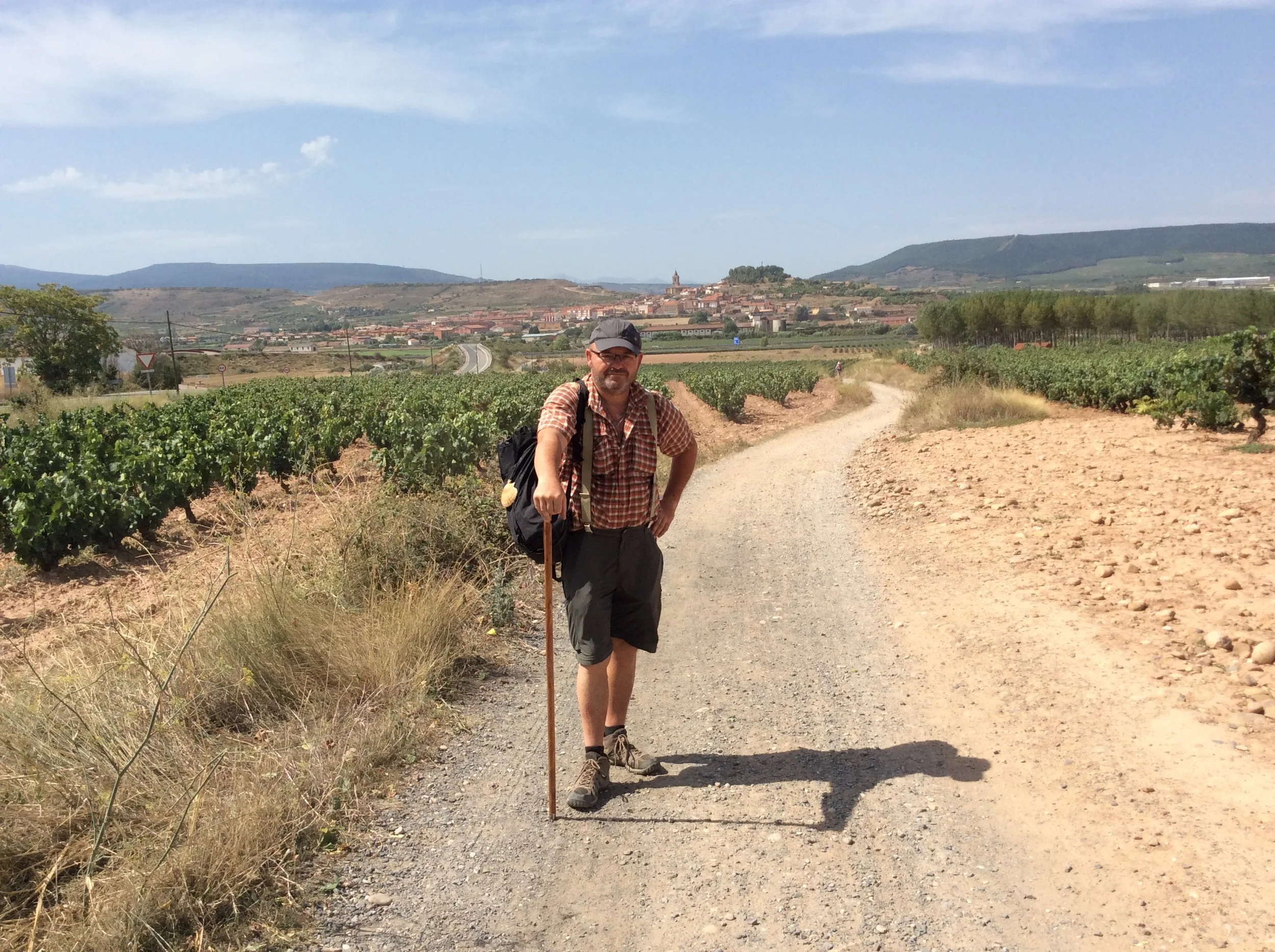John Larimer
Guest Columnist
“Our life is a journey, and when we stop moving, things go wrong,” Pope Francis said recently to a few fellow cardinals.
I first completed the Camino Frances on Sept. 26, 2015. This marked one year after open heart surgery. Shortly after heart surgery I began to see things differently and set out to achieve a dream and a goal to honor my heritage and my dear departed Mother and Father. I was determined to defy odds. Now I’m on my second Camino and will walk the Camino Portuguese from Porto, Portugal to Santiago de Compostela in northern Spain.
I have been in Europe now for a few weeks hiking in the Swiss and French Alps. I also went to the Lauterbrunnen valley and Chamonix, France. I’m now in Madrid waiting for the night train to Lisbon and then on to Porto where I will start my pilgrimage to Santiago de Compostela on the Camino Portuguese. I will walk 150 miles in about 12 to 14 days. My goal is to arrive on Sept. 26, in honor of my mother who died seven years ago.
When I started my journey in August 2015 I called my story ‘On the road to recovery and the Camino de Santiago’.
I wanted to honor and pay tribute to my family. A primary tribute was first to my mother Loretta Larimer who was tragically killed Sept. 26, 2011 by a 16-year-old driver who was distracted while driving and lost control of her vehicle.
The Camino became a very important journey to honor the lives of my family and a time to heal, recover, and find peace. I was also recovering from open heart surgery. While walking across northern Spain and arriving in Santiago I discovered that the journey would not only change my life but would transform me as well. I’ve dreamed about returning ever since I finished that first Camino on the 4th anniversary of my mother’s death.
The Camino de Santiago, known as the “Way of Saint James,” is a pilgrimage route to the city of Santiago de Compostela in Galicia which is in Northwest Spain. This location is the burial site of Saint James the Great, one of Jesus’ apostles. Since the Middle Ages, pilgrims from all over Europe would walk hundreds of miles from their homes to pay homage to the remains of Saint James.
Saint James came to Spain to preach and teach the gospel. He returned to the Holy Land in A.D 44 where Herod Agrippa had him beheaded. Two of his disciples brought his body back to Spain. The body of Saint James seems to have been forgotten for several centuries until 813 when his grave was discovered and the first church was built and Santiago de Compostela was born. The present cathedral was begun in the year 1075. The Spanish name for Saint James is Santiago.
Three years ago I walked 500 miles on an ancient pilgrimage in Spain known as the Camino de Santiago. I started my journey and my first pilgrimage in August 2015 on the Camino Frances also known as the ‘French Way’ which goes from the French side of the Pyrenees through the interior of Northern Spain over 500 miles to Santiago de Compostela, in the Spanish region of Galicia. It’s the most famous and followed route. The Camino de Santiago — “Way of St. James” is a 1,20-year-old pilgrimage route to the city of Santiago de Compostela.
The earliest records of pilgrims walking to the shrine, dedicated to St. James, date from around the 8th century. Pilgrims walked for months from their homes to the Cathedral in Santiago de Compostela. As of today, tens of thousands walk the Camino de Santiago each year in a journey of more than 500 miles.
The Camino’s journey generally follows old Roman trails and roads. The Camino de Santiago is a large network of ancient pilgrim routes stretching across Europe and coming together at the tomb of St. James.
“French way” stretches over 500 miles from St. Jean-Pied-du-Port at the foothills of the Pyrenees in France. Other Spanish routes are the Camino Ingles which stretches from Ferrol & A Coruna, the Via de la Plata or the “Silver way”. This path extends from Seville to Santiago de Compostela in northwest Spain. The Camino de Santiago del Norte, the “northern route,” follows the North coast of Spain. The Camino Portuguese extends from Lisbon to Santiago.
This is the route I’m taking.
I will start my Camino in Porto, walking up the coast of Portugal to Vila do Conde and then turning inland and walking north through the center of Portugal. This should take 10 to 14 days and I plan to arrive in Santiago on Sept. 26, which marks the seventh anniversary of my mother’s death.
John Larimer is from Camden Point and is 59 years old. This is his second Camino, completing the first the Camino Frances September 26, 2015. He will walk the Camino Portuguese from Porto, Portugal to Santiago de Compostela in Northern Spain writing each week.


